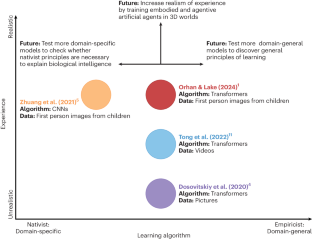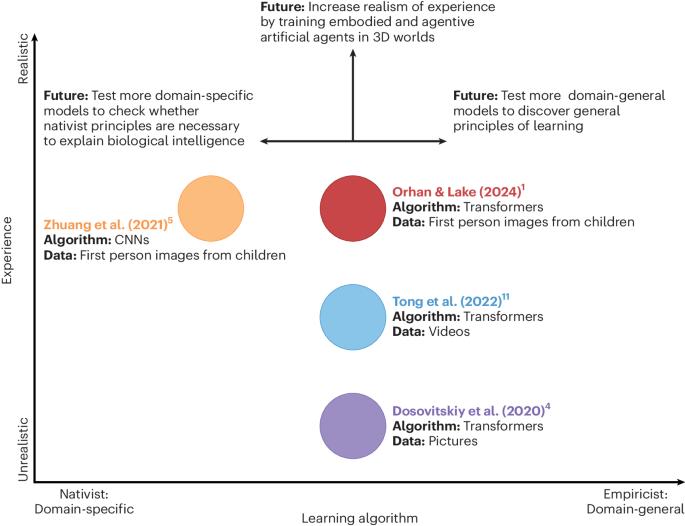人工智能解决 "自然-养育 "之争
IF 18.8
1区 计算机科学
Q1 COMPUTER SCIENCE, ARTIFICIAL INTELLIGENCE
引用次数: 0
摘要
认知科学中的一个经典问题是,学习是否需要先天的、特定领域的归纳偏差来解决视觉任务。最近的一项研究根据儿童的第一人称视觉经验对机器学习系统进行了训练,结果表明,在没有关于物体或空间的先天归纳偏差的情况下,也可以学习视觉知识。本文章由计算机程序翻译,如有差异,请以英文原文为准。


Artificial intelligence tackles the nature–nurture debate
A classic question in cognitive science is whether learning requires innate, domain-specific inductive biases to solve visual tasks. A recent study trained machine-learning systems on the first-person visual experiences of children to show that visual knowledge can be learned in the absence of innate inductive biases about objects or space.
求助全文
通过发布文献求助,成功后即可免费获取论文全文。
去求助
来源期刊

Nature Machine Intelligence
Multiple-
CiteScore
36.90
自引率
2.10%
发文量
127
期刊介绍:
Nature Machine Intelligence is a distinguished publication that presents original research and reviews on various topics in machine learning, robotics, and AI. Our focus extends beyond these fields, exploring their profound impact on other scientific disciplines, as well as societal and industrial aspects. We recognize limitless possibilities wherein machine intelligence can augment human capabilities and knowledge in domains like scientific exploration, healthcare, medical diagnostics, and the creation of safe and sustainable cities, transportation, and agriculture. Simultaneously, we acknowledge the emergence of ethical, social, and legal concerns due to the rapid pace of advancements.
To foster interdisciplinary discussions on these far-reaching implications, Nature Machine Intelligence serves as a platform for dialogue facilitated through Comments, News Features, News & Views articles, and Correspondence. Our goal is to encourage a comprehensive examination of these subjects.
Similar to all Nature-branded journals, Nature Machine Intelligence operates under the guidance of a team of skilled editors. We adhere to a fair and rigorous peer-review process, ensuring high standards of copy-editing and production, swift publication, and editorial independence.
 求助内容:
求助内容: 应助结果提醒方式:
应助结果提醒方式:


